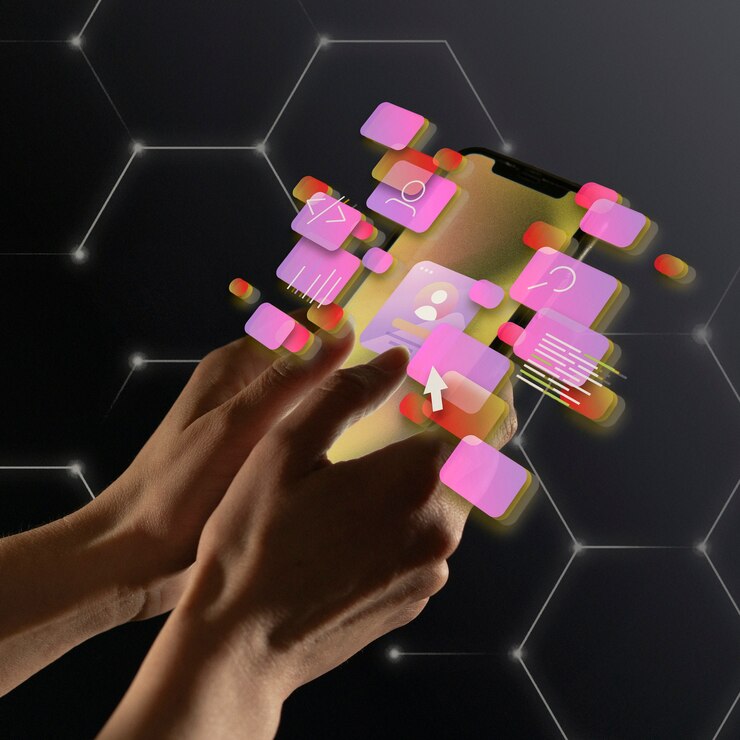What are Decentralized Apps (dApps) in Blockchain?
 Elan thomas
Elan thomas
If you want to be Blockchain savvy, Decentralized Apps (dApps) are another tough concept for you. So, what is it? What does it do? How does it work? Let's understand with an example.
If you are a consumer, you should be concerned about the authenticity and origin of the products you purchase. It is more important when we are talking about food items. Right?
To ensure that the food products are passed through a secure and transparent supply chain, we have a dApp on a blockchain, such as VeChain. It tracks the entire supply chain journey of products from the manufacturer to the retailer.
Each stage of the supply chain, including sourcing of raw materials, production, transportation, and distribution, is recorded on the Blockchain through smart contracts.
As a consumer, you can use the dApp to scan a QR code on the product's packaging or input a unique identifier to access the product's entire history.
The decentralized nature of the Blockchain ensures that the information is tamper-resistant, providing a high level of transparency and trust. So, this is how dApps in Blockchain work.
Decentralized Apps?
Decentralized Applications, or dApps, or Dapps, are applications that run on a decentralized or pee network like Blockchain. dApps are very different from traditional applications as they are not hosted on centralized servers and are operated on a peer-to-peer network, where the data and logic are distributed across the network nodes.
It has an open-source and free environment that doesn't have any control or interference by any single party. Here are some examples of it:
Finance/DeFi: Uniswap, Compound Finance, MakerDAO
Supply Chain: VeChain, IBM Food Trust, Provenance
Gaming: CryptoKitties, Decentraland
Social Media: Steemit, Minds
Healthcare: Medicalchain, Health Wizz, SimplyVital Health
Identity Management: uPort, Civic
Real Estate: Propy, RealT
Education: Tutellus, Odem
Energy: Power Ledger, WePower
Governance/Voting: Aragon, Horizon State
Legal/Smart Contracts: OpenLaw, Agrello
Decentralized Apps (dApps) in Web 3.0
Web 3.0 is the next picture of dApps after the current version of the internet or World Wide Web, web 2.0. Web 3 or Web 3.0 talks all about Blockchain and decentralization that will help developers create and host their apps.
One of those platforms is Ethereum, which has a powerful set of protocols and tools. Currently, it has over 2700 dApps as it was the first platform that launched the first dApps. These apps have numerous benefits that are helping in the growth of Web 3.0. Let's discuss some of them.
Decentralization: As dApps have been born from the Blockchain, decentralization is one of the top features that one may encounter. The server of traditional applications is usually centralized. So, in case any failure or breach happens to the backend, the whole system has to suffer. But dApps distribute their data and logic across a network of nodes, which makes the system strong and reliable.
Moreover, if a single network isn't working well, you still have other nodes that would be available. This makes dApps in Blockchain more fault-tolerant.
Smart Contracts: Smart contracts are known as self-executing contracts. They have some specific terms of the agreement directly written into code. They automate and enforce the execution of contractual agreements, eliminating the need for intermediaries. Now, if someone has to develop a dApp, they can be supported by single smart contracts.
Immutability: Data stored on the Blockchain technology is immutable, meaning it cannot be altered, broken, or tampered with once recorded because it follows consensus algorithms. With this high level of security and transparency, it is ideal for supply chain management, healthcare, and finance.
Cryptographic Security:
Blockchain technology depends on cryptographic techniques to secure transactions and user identities. As it has multiple nodes, any hacker must struggle a lot to attack all the nodes simultaneously. Public and private keys enable secure and verifiable transactions, protecting users from unauthorized access and ensuring the integrity of data.
Tokenization:
Many decentralized applications utilize tokens as a means of exchange. These tokens can represent ownership, voting rights, or other forms of value. By incorporating tokenization, dApps incentivize users to actively participate in the network.
Interoperability: Interoperability is a key feature that allows dApps to interact seamlessly with other decentralized applications and blockchain networks. Standards like ERC-20 and ERC-721 have played a crucial role in fostering interoperability.
"The daily participation of users in decentralized applications (DApps) experienced a remarkable 396% year-over-year increase, reaching 2.4 million. Notably, this figure is merely 5.8% lower than the user activity observed in Q4 2021."
dApp Scams to Be Aware Of
As the demand for dApps in Blockchain increased, it became a center of attraction for several scammers. There are some trending scams that you should be aware of:
Fake ICOs (Initial Coin Offerings):
It is a crypto scam that involves fraudulent Initial Coin Offerings. Scammers create enticing whitepapers and websites, promising groundbreaking dApps and high returns. Unsuspecting investors are then duped into contributing funds, only to realize later that the promised dApp never materializes.
Ponzi Schemes in Decentralized Clothing
Ponzi schemes have found a new home within the decentralized space. Some dApps operate as Ponzi schemes, relying on a constant influx of new investment to pay returns to earlier investors. Once the flow of new funds diminishes, these schemes collapse, and investors get significant losses.
Impersonation of Legitimate Projects: Scammers often create fake versions of legitimate dApps, exploiting the reputation of established projects. Users may unknowingly interact with these fraudulent versions and often share their personal information or financial assets.
Bottom Line
With all the above discussion and dApps, it's pretty clear that we are going to meet a new level of tech generation. So, if you want to know more about dApps, it's also important to know how dApps differ from traditional apps.
I hope this blog is helpful to you. For more related blogs, stay connected with me.
Subscribe to my newsletter
Read articles from Elan thomas directly inside your inbox. Subscribe to the newsletter, and don't miss out.
Written by
